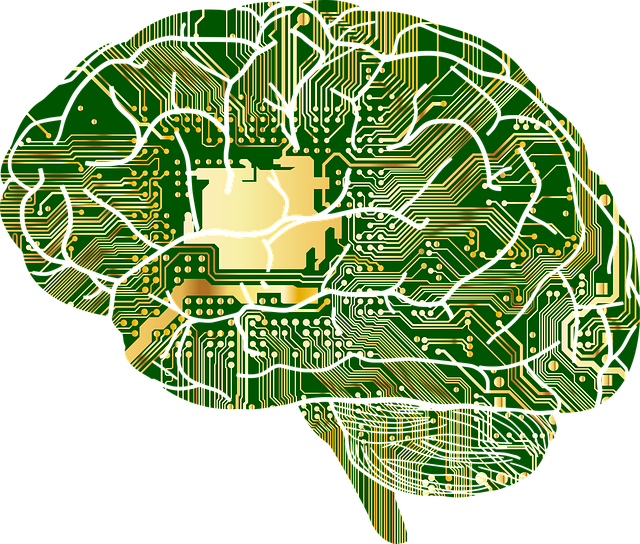27th Apr 2020
Here BNA student member, Ibraheem Bin-Suhayl, explores neural interfaces, their impact, possibilities and risks.
The British Neuroscience Association welcomes contributions from our students, postdocs and early career members who are interested in writing. If you would like to write an article for either the website or the student section of the
BNA Bulletin, please contact our Head of Marketing and Communications,
Alex.Campbell@bna.org.uk.

Neural Interfaces (NI) are rapidly gaining the attention of governments, companies and scientists alike. This technology allows for stimulation and recording of the nervous system by a machine, which can be used for a variety of functions.
Despite its relatively recent rise to mainstream attention, NIs have been used since the 1930s [1]. These have been clinically useful in many situations such as with cochlear implants, Deep Brain Stimulation for the treatment of Parkinson’s disease, and identification of dysfunctional areas in epileptic patients [2].
Recent research also shows promise in using such technology for new and innovative clinical purposes [3] [4].
There is also a huge amount of theoretical uses for NIs, such as immersive gaming [5] and control of everyday devices [6], that could be possible if both our technology and understanding of the brain is enhanced.
Many large organisations have shown interest in NIs over the past few years, with each making their own contributions relatively recently. These include Facebook funding research into typing using brain activity [7] and Neuralink demonstrating the use of a high-precision robotic implantation of individual electrodes into brain tissue [8]. Both the Royal Society [9] and Parliamentary Office of Science and Technology [10] have also released reports on the technology.
However, as attention and funding into to the field increases, many risks must also be considered. The need to address the ethical and security concerns of NIs has been highlighted by the Royal Society [9] and multiple academics [11].
An important consideration is cybersecurity because the possibilities of a hacker gaining remote control over a NI could be devastating. Research has shown that non-invasive stimulation of the motor cortex using an NI can drive limb movement [12]. While this is far from being able to puppeteer someone, imagine a surgeon using a NI to aid a surgery, when even a small mismove could be fatal.
Another issue is that data privacy laws and their enforcement may no longer be suitable for technology that interact with something as personal as a brain. While current technology does not give access to thoughts or memories, this may change, and so it is important to consider the possibility of an event such as the Facebook-Cambridge Analytica Scandal.
To avoid such events, it is vital that public engagement with shaping regulations occurs early and continues as the technology develops and further possibilities open.
Bibliography
- Golla, F., Graham, S., & Walter, W. (1937). The Electro-Encephalogram in Epilepsy. Journal of Mental Science, 83(343), 137-155.
- Panzica, Ferruccio et al. Identification of the Epileptogenic Zone from Stereo-EEG Signals: A Connectivity-Graph Theory Approach. Frontiers in neurology vol. 4 175. 6 Nov. 2013,
- Hochberg LR, Cudkowicz ME. 2014. Locked in, but not out? Neurology 82: 1852-1853.
- Flesher SN, Collinger JL, Foldes ST, Weiss JM, Downey JE, Tyler-Kabara EC, Bensmaia SJ, Schwartz AB, Boninger ML, Gaunt RA. 2016. Intracortical microstimulation of human somatosensory cortex. Science Translational Medicine 8: 361ra141.
- Valve psychologist explores controlling games directly with your brain. Venture Beat. 24 March 2019. See https://venturebeat.com/2019/03/24/valve-psychologist-explores-controlling-games-directly-with-your-brain/. Accessed: [29 Feb 2020]
- Zhang X, Yao L, Zhang S, Kanhere S, Sheng M, Liu Y. 2019. Internet of things meets Brain–Computer interface: A unified deep learning framework for enabling human-thing cognitive interactivity. IEEE Internet of Things Journal 6: 2084-2092.
- Moses, D.A., Leonard, M.K., Makin, J.G. et al. Real-time decoding of question-and-answer speech dialogue using human cortical activity. Nat Commun 10, 3096 (2019)
- Musk E. 2019. An integrated brain-machine interface platform with thousands of channels. bioRxiv: 703801.
- iHuman Perspective: Neural Interfaces, 2019. Accessed: [29 Feb 2020]
- Potter M., Harriss L. 2020. Brain-computer interfaces. POSTnotes.
- Yuste, R. et al. (2017). Four ethical priorities for neurotechnologies and AI. Nature News, Vol 551, 159
- Grossman, Nir et al. Noninvasive Deep Brain Stimulation via Temporally Interfering Electric Fields. Cell vol. 169,6 (2017): 1029-1041.e16.








